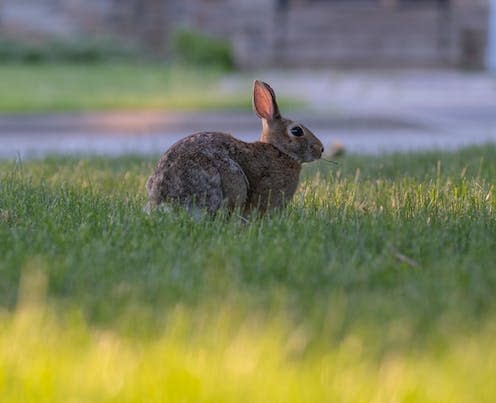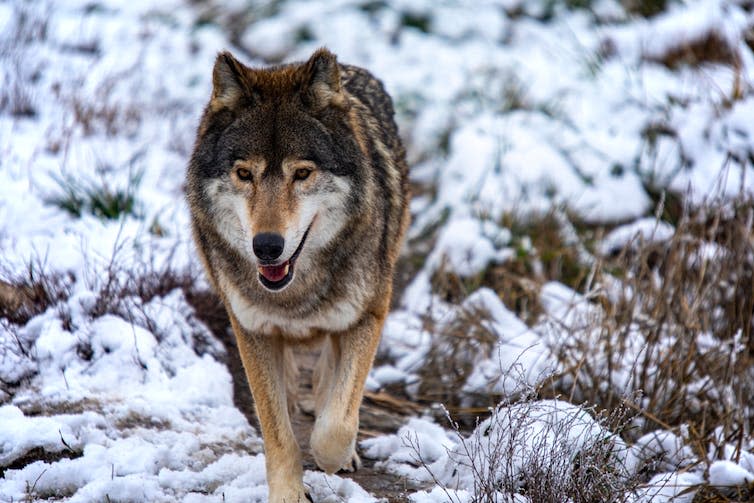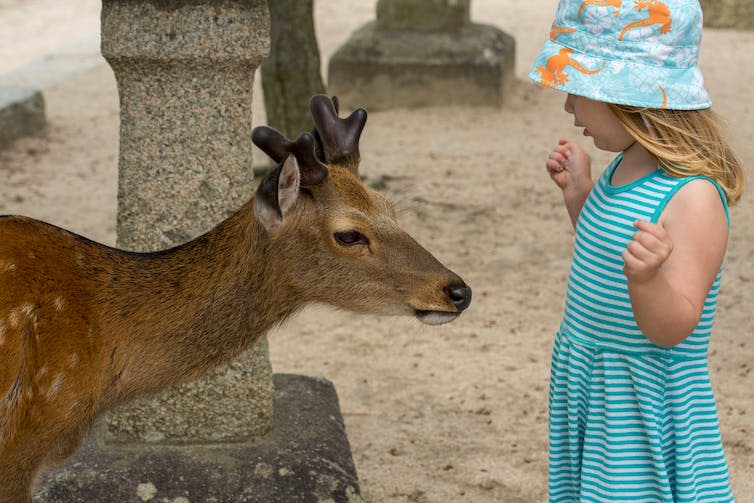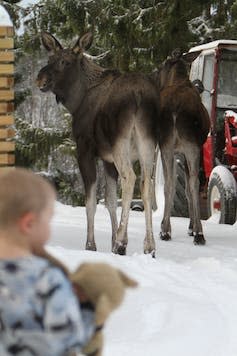'Clubbing a bunny to death is very effective but it sure does look bad': the inside stories of urban animal control

In July 2022, a walrus, affectionately nicknamed Freya, was culled near Norway’s capital city in the Oslo fjord – crowds of people approaching her meant there was a potential risk to human safety. The loss of this charismatic and seemingly peaceful animal sparked a global outcry. Last month, an online campaign funded the erection of a statue in Oslo in Freya’s honour.
But while some wild animal culls go viral, a great many more urban wildlife deaths go unnoticed and unchallenged. Rat carcasses, for example, are disposed of discreetly and urban residents even push for increased culling of deer that feed on their tulip beds or spread ticks.
To understand what determines the diverse reactions to animal culls, I interviewed and observed municipal cullers in Sweden. These cullers do the dirty work of disposing of wild animals that pose a threat to biosecurity, public safety and human infrastructure.
It seems that while the species of animal predictably mattered, factors such as the location, timing, methods used, people involved and the reasons for the cull also influenced whether cullers encountered public opposition. Any misjudgement made in the culling process could have repercussions in terms of social acceptance, further complicating future culls. This is especially relevant in today’s world as people frequently use their mobile phones to record and share what they see.
What and where to cull?
Humans value some species over others (a concept called speciesism) and will defend them despite their damages being comparable. Rats and rabbits both chew wires and transmit diseases and parasites, but the cullers we interviewed mentioned that “people have a whole different outlook” on these two species.
They also stated that “the cuter the critters, the bigger the villains we are, and vice versa”. In one instance, cullers were rewarded with cake after removing wild boar from an area where they were recently introduced. The boars were deemed “big and ugly and in the way, scaring children”. By contrast, when called in to kill large carnivores like wolves that had sustained injuries in traffic accidents, cullers had to mask their identities and often relied on police escorts.

People’s treatment of individual animals from the same species can vary. If large birds are perceived as causing disturbances to both people and recreational activities, they are often culled without much consideration. In 2018, for example, a male swan living on a canal in the Swedish city of Malmö was shot dead by professional hunters after showing signs of aggression towards passers-by. But, as the swan was seen as a prominent feature of the city, the culler received death threats.
There are certain locations for which the killing of wild animals is deemed unacceptable by onlookers. The cullers we interviewed were expected to carry out their activities discreetly as they often faced criticism when culling animals in crowded areas.
Some cullers, for example, had experience killing rabbits and deer in kindergartens. One culler recalled having “to ask the kids to go inside” as it caused children distress to see animals being killed and regularly led to confrontation with teachers.

When, how and who?
In line with operating discreetly, cullers noted having to become as crepuscular (active at dawn and dusk) as the animals they hunted. One culler noted receiving “a lot less yelling at me and fewer questions when you’re out at night and early mornings”.
Animal culling can also be unpalatable to the eye. Certain culls – particularly those involving brute force or the deaths of other animals – violate public standards.
One culler explained that “clubbing a bunny to death is very effective and it dies right away, but it sure does look bad”. By contrast, those who had carried out culls using a shot with a silencer from a vehicle had encountered much less criticism.
Having the wrong people carry out animal culls risks upsetting bystanders. During our interviews, cullers emphasised the importance of being locally recognised, with good people management skills to defuse conflicts. One said: “The last thing you want is some macho hunter to come in and finish the job, with no people skills.”
What’s the reason?
Some animals are simply unwelcome in cities. The mere presence of wild boars in urban areas of Sweden still triggers culls, regardless of what they are doing.
However, certain animals were deemed cullable only under specific circumstances. If an animal was perceived as being behaviourally or geographically out of line, such as a moose terrorising shoppers outside a shopping centre, then the public generally supported its removal.
But in another example, cullers recounted having to involve the police to remove a girl who was protecting a moose that had been hit by a car.
So the public can be contradictory in its defence of animals. But cullers also exhibited similar idiosyncrasies themselves. One culler, who was routinely called out to cull birds in his city “drew the line” at culling a nightingale that kept a resident up at night.
In some parts of the world, animal rights organisations call for lethal removals of problematic wildlife to be replaced by rescues or relocations. But the future is somewhat unpredictable. As cities continue to encroach on animals’ habitats, human interaction with wild animals will become increasingly common.
What’s clear, though, is that the situation calls for the development of a wildlife etiquette within the general public. This involves understanding how to behave in a manner that prevents the emergence of problematic wild animals in the first place. These animals are often faultless and have been conditioned to lose their shyness.
This article is republished from The Conversation under a Creative Commons license. Read the original article.

Erica von Essen receives funding from Formas, Dnr 2019-01168

 Yahoo News
Yahoo News 

